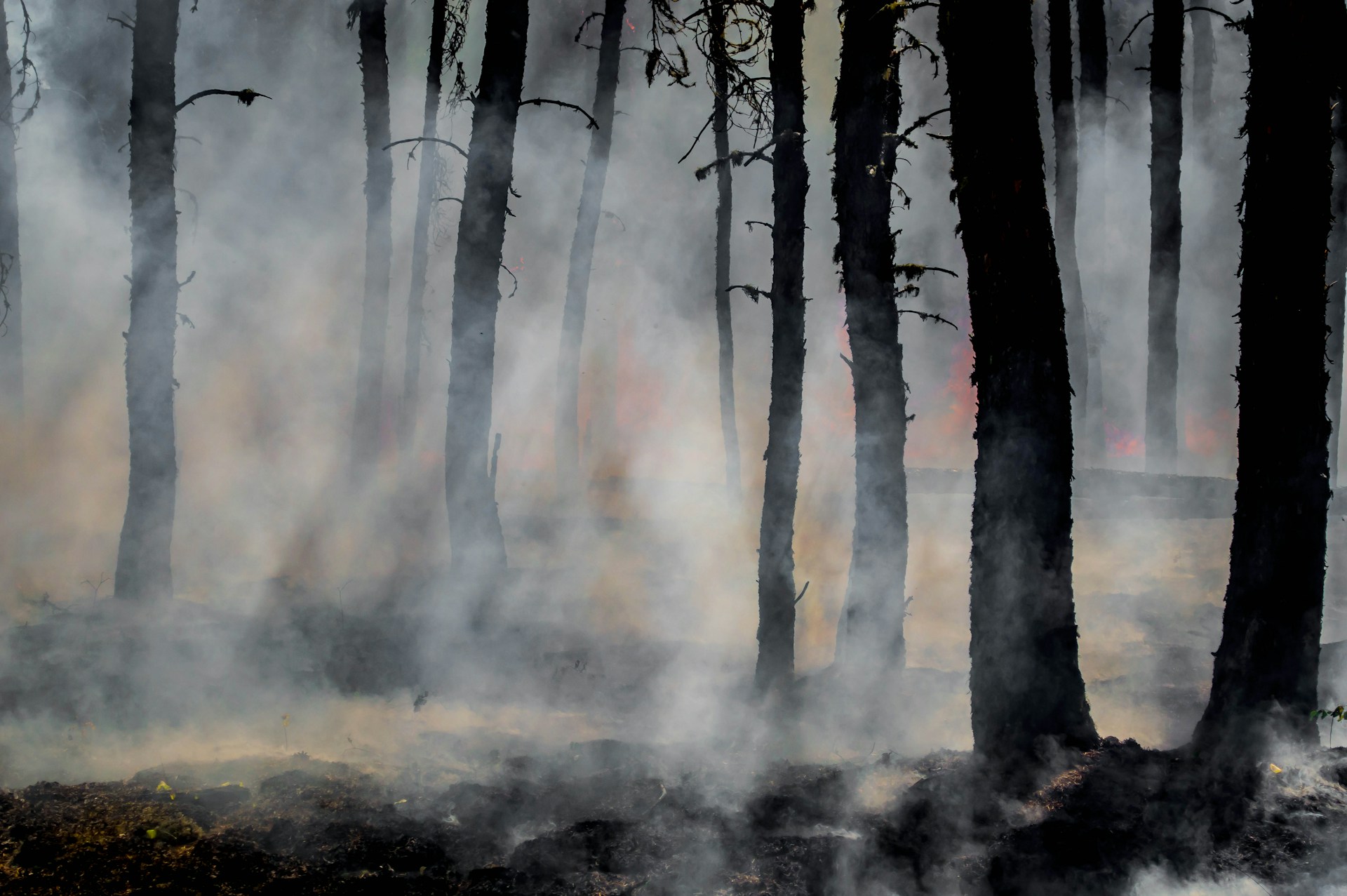Canada News
How Canada can better adapt to extreme weather

Thousands of people have already been evacuated across various locations in British Columbia and Alberta in this year’s wildfire season, including the recent devastation of Jasper, Alberta. (File photo: Joanne Francis/Unsplash)
,(Version française disponible ici)
It may seem to Canadians that extreme forms of weather are the new reality of summer. For many of us, we no longer sit on the sidelines. If we aren’t affected directly, chances are we are concerned about a loved one dealing with evacuation orders, flooding, heat or possible brownouts.
Thousands of people have already been evacuated across various locations in British Columbia and Alberta in this year’s wildfire season, including the recent devastation of Jasper, Alberta.
In June, a heat dome affecting Atlantic Canada, Ontario and Quebec set hottest-ever records in more than 100 locations. Provinces and territories – even Nunavut – have had heat advisories in effect through July.
Flash flooding in Nova Scotia resulted in the death of a 13-year old boy, echoing a similarly tragic flood last year that led to the deaths of three children and one adult.
Torontonians became reacquainted with extreme rain when a storm caused widespread power outages and flooding, affecting residential homes, key transit hubs and thoroughfares. Similar flooding in 2013 and 2018 in the city led to insured damages of more than $1 billion and $80 million, respectively.
In the face of devastating weather events, communities deserve more than to be told that they are “resilient.” Extreme weather also provokes calls for climate action.
While understanding the links between extreme weather and climate change is an important step to preparing for changing environmental conditions, such recognition is not enough alone to protect communities. So, what is to be done?
The Trudeau government released a national adaptation strategy in 2023, but key gaps remain in planning, financing and co-ordination that keep Canadian cities, provinces and regions vulnerable to extreme weather.
Currently, we are reacting to extreme weather rather than planning for the inevitable disruption and displacement facing communities. Here are three approaches to addressing these gaps that support more sustainable and equitable adaptations.
First, we must understand that nature will not bend to our will. In developing cities, industries and agriculture, natural environments have been altered in a way that exposes communities to extreme weather.
For instance, cities have been built by displacing rivers, draining wetlands and through widespread construction of hard, impermeable surfaces such as buildings, roads and parking lots. In the event of heavy rain, these developments block water from being absorbed into the ground effectively.
In the wake of recent flooding in Toronto, much has been made of the need for upgraded sewage storm infrastructure. While this is a worthy, though costly, endeavour, there is no way to engineer ourselves out of extreme rain events.
It is necessary to undertake comparable actions that re-establish natural environments that are built to absorb water. The sight of firefighters rescuing submerged passengers on the Don Valley Parkway reminds us that it is a highway sitting on top of a displaced river.
The city’s $1.4-billion Port Lands project, which seeks to floodproof newly developed regions where the Don River and Lake Ontario meet, is not enough to overcome the widespread development that blocks water absorption throughout the Don Valley.
Models in places that are low-lying or have faced devastating flooding from Calgary to the Netherlands demonstrate that shifting perspectives and infrastructure development from “fighting water” to “living with” water is vital for future protection against extreme weather.
Second, we should resist being wowed by technical solutions that over-promise and under-deliver. We bank on artificial intelligence (AI) to support climate adaptation, from predicting disease and drought in agriculture to facilitating rapid tree planting.
While technological innovation is no doubt part of the response to extreme weather, let’s not be duped into thinking it replaces the required changes in how we think and act about adaptation.
For instance, using AI to determine where to plant trees en masse instead of adapting logging industry practices and undertaking forest protection strategies will not only fail to prevent wildfires, it could accelerate them.AI technology itself consumes massive amounts of energy to function, which accelerates carbon emissions instead of supporting decarbonization goals.
Third, we must focus and fund responses to extreme weather for groups that are most vulnerable to its effects. For example, in June and July 2021, a heat dome in British Columbia killed 619 people, the majority of whom were elderly, low-income, had a disability or lived alone.
In Vancouver, this event reinforced knowledge of the need for a socially oriented extreme weather response to service vulnerable groups. The municipality now undertakes community heat education and delivery of “cool kits” to community organizations most in need.
While these efforts are admirable, these initiatives are small-scale and should be better funded across Canadian cities.
If we do not better adapt to extreme weather, communities will continue to bear the consequences of poor public policy. We need to commit to forms of planning that protect and recognize the power of natural environments without being distracted by the shine of new technology.
Preventing future deaths from extreme weather also requires an equity-based focus on those most at risk including tenants, northern and remote communities and people who cannot afford adequate heating and cooling.
Of course, climate mitigation will be key to preventing worsening environmental futures. Nevertheless, we feel the effects of decades of environmental neglect now and can better respond in kind.
This article first appeared on Policy Options and is republished here under a Creative Commons license.





















